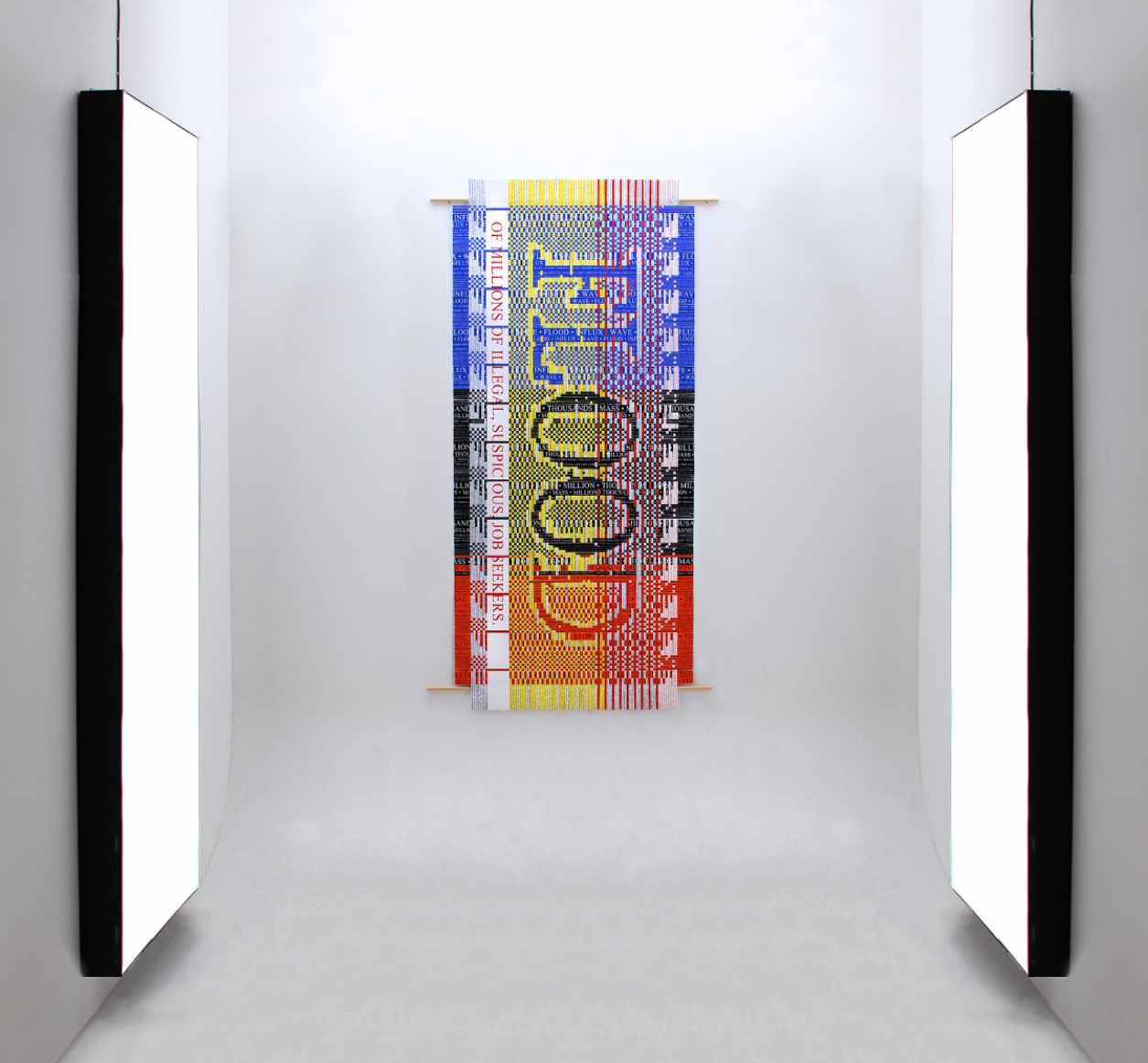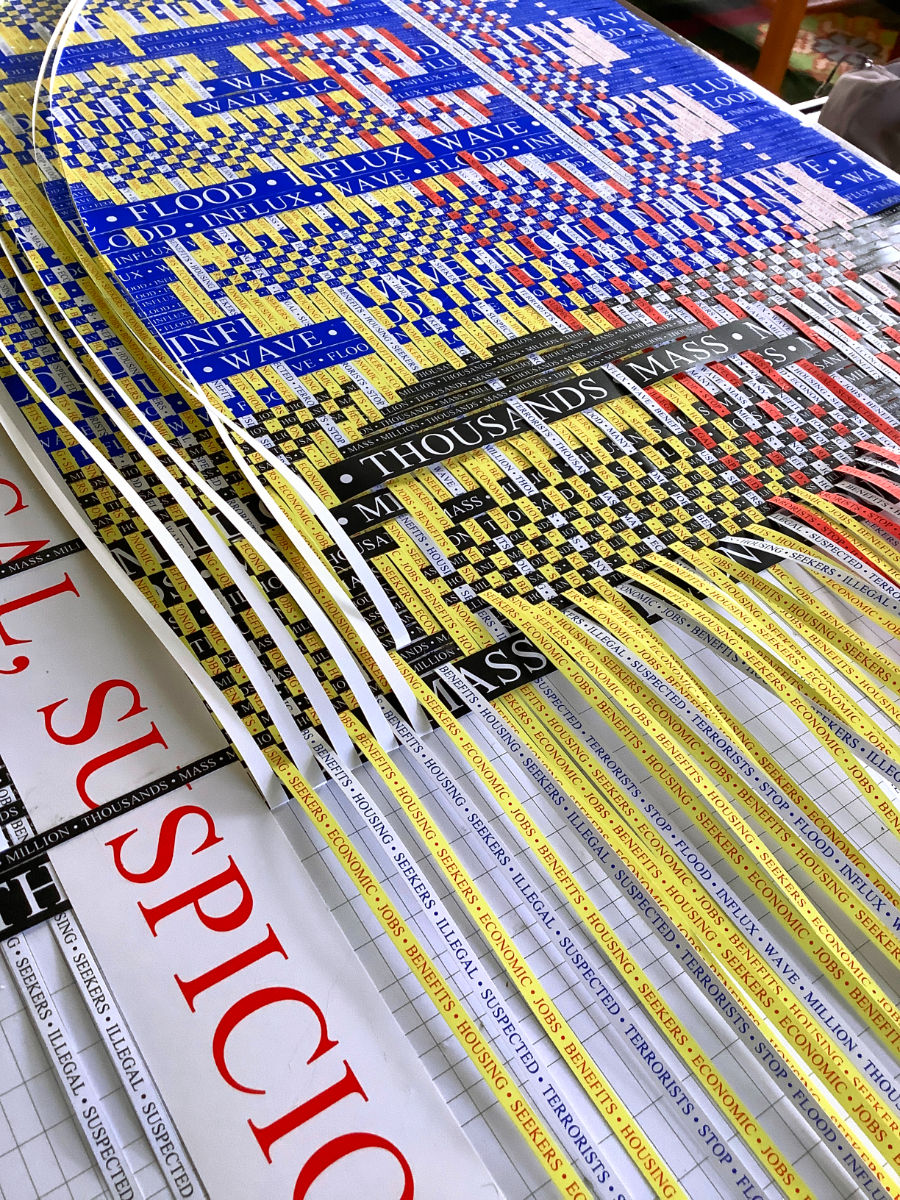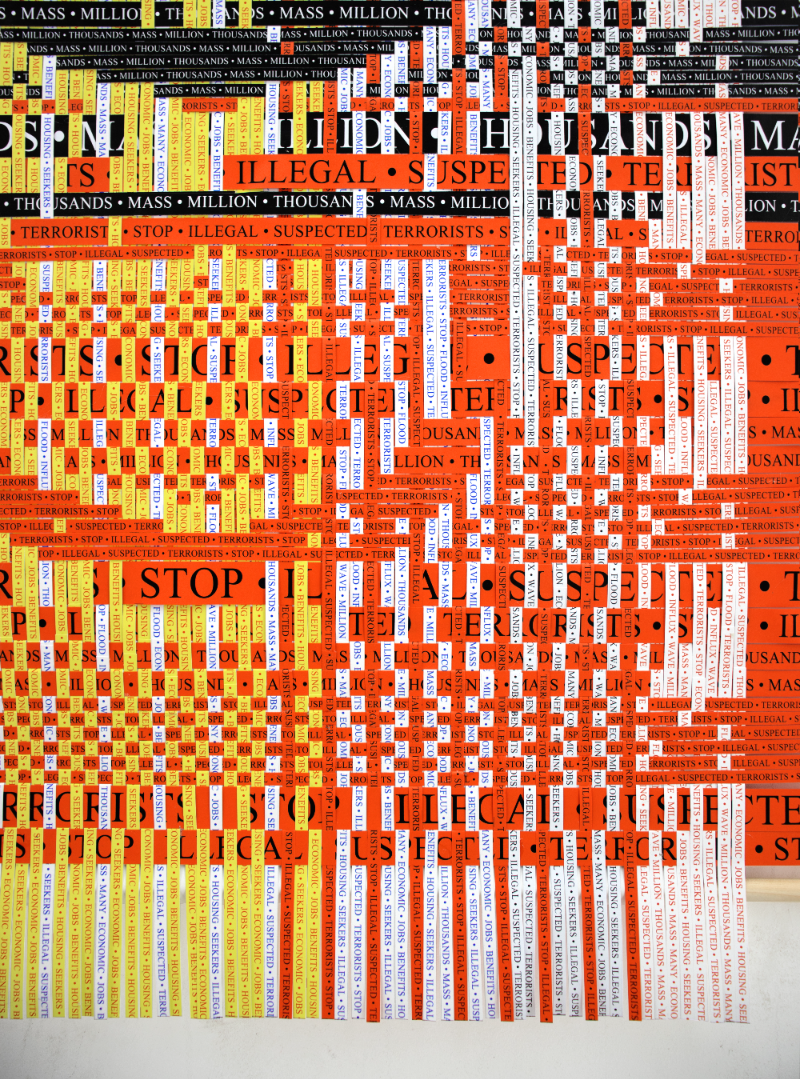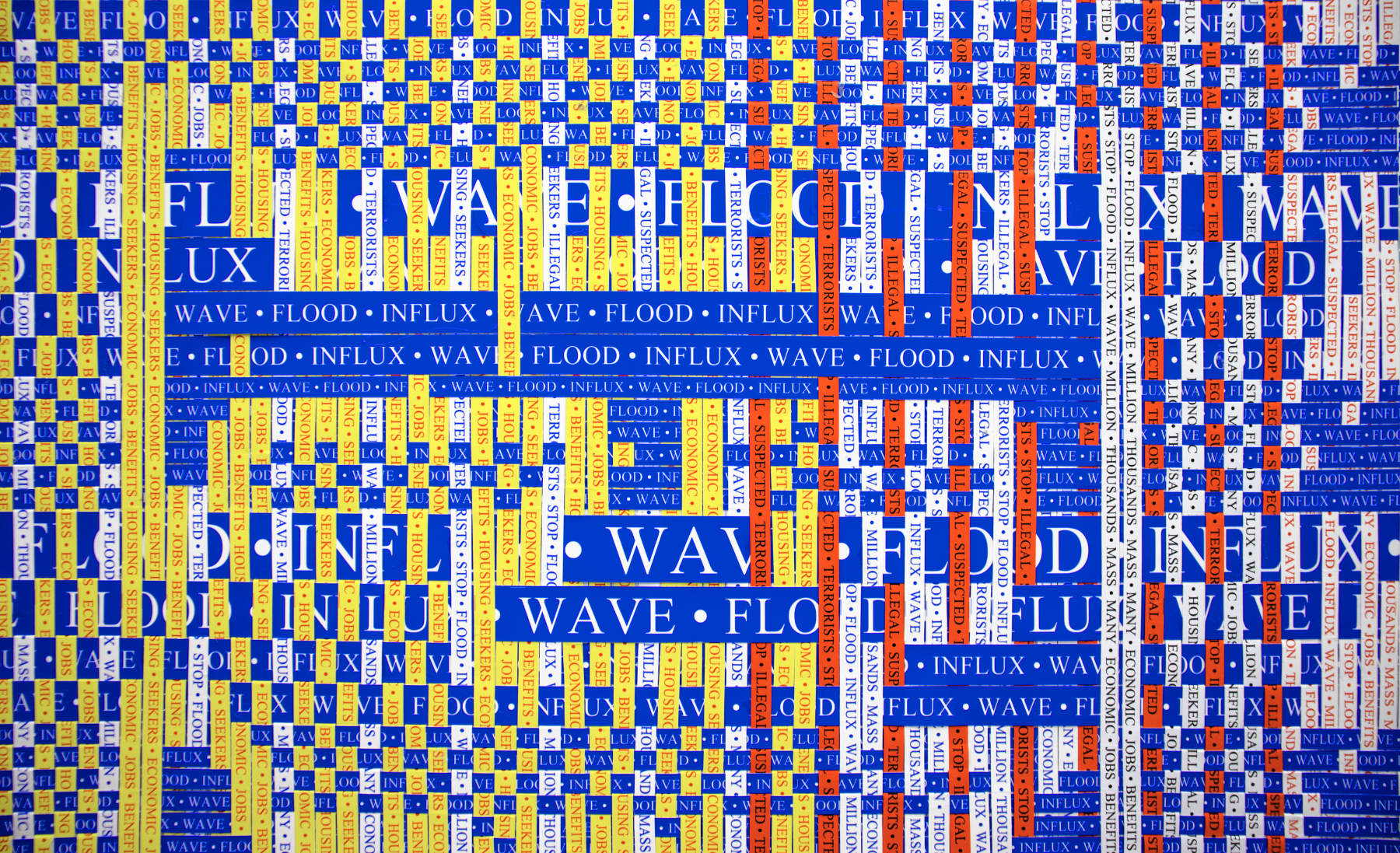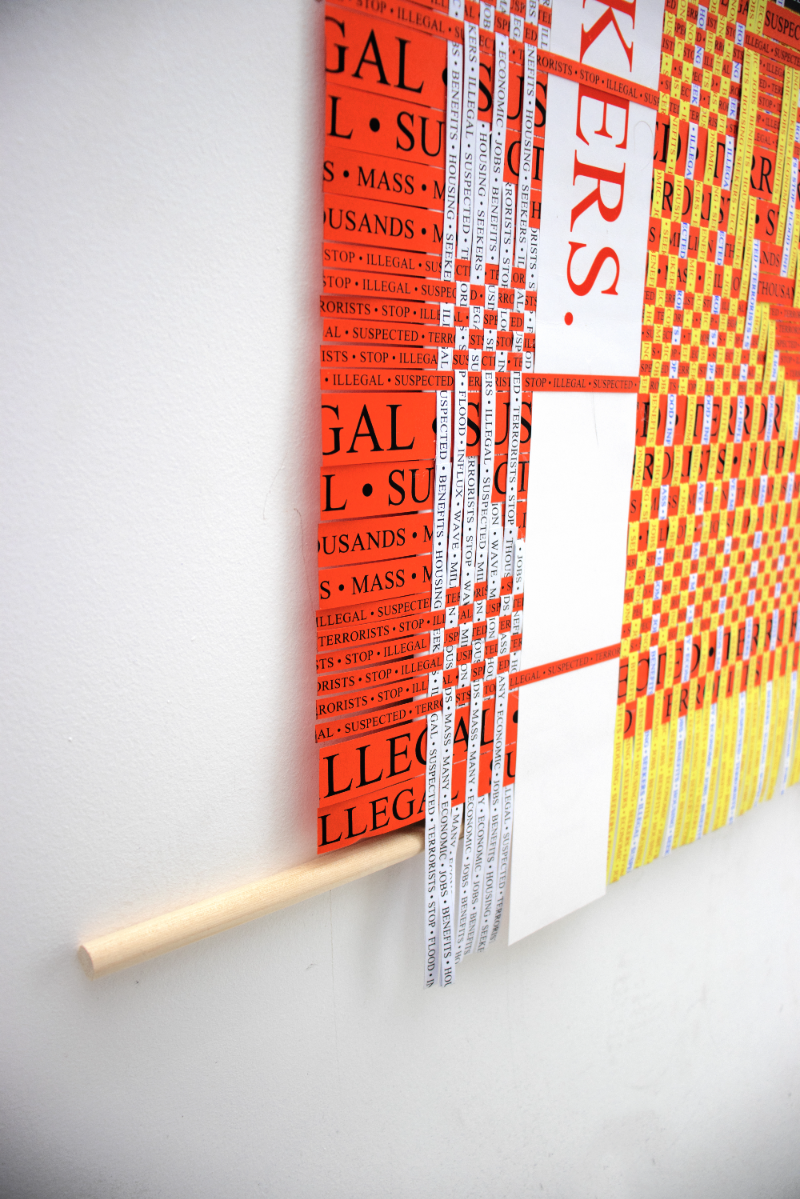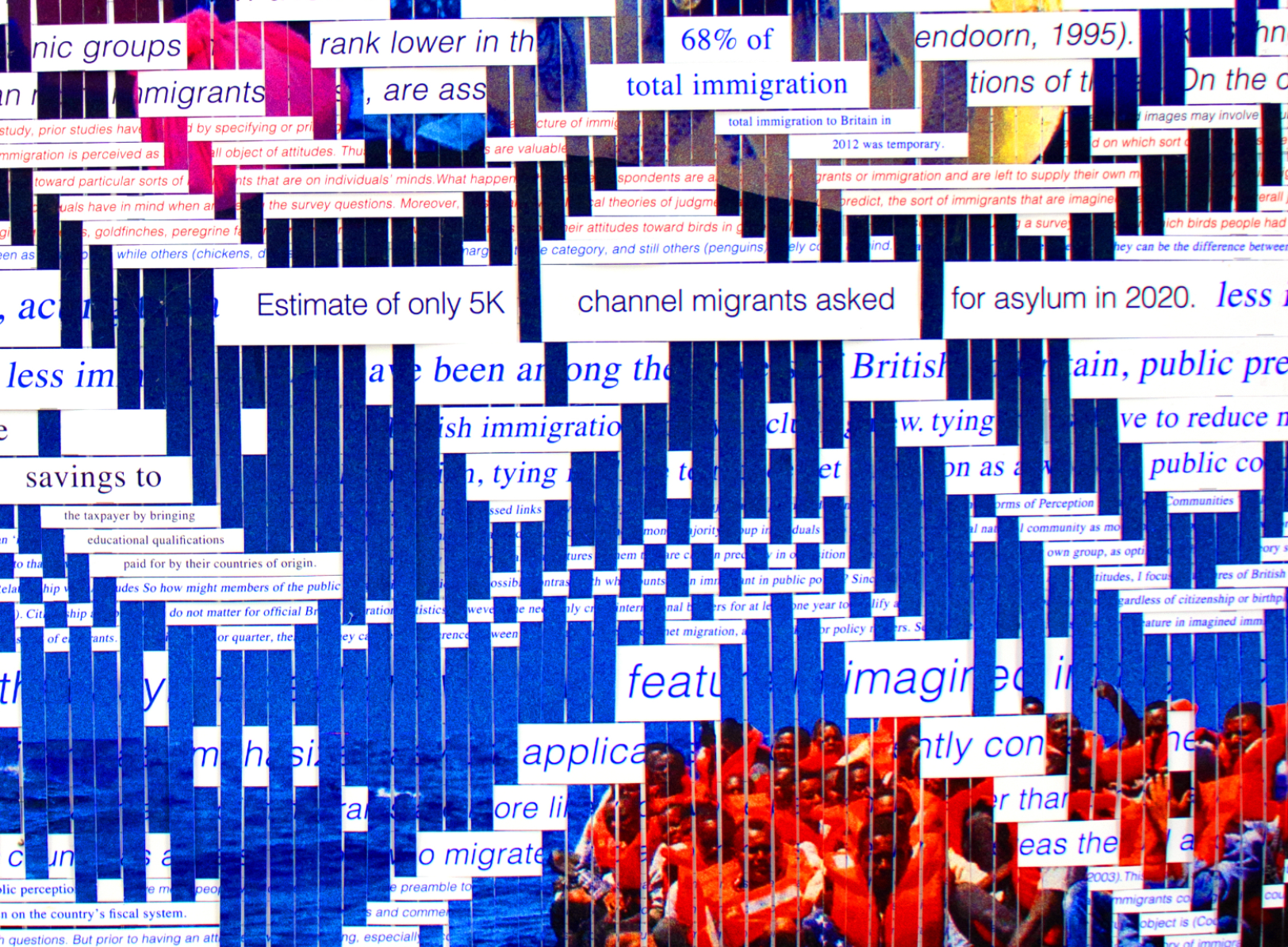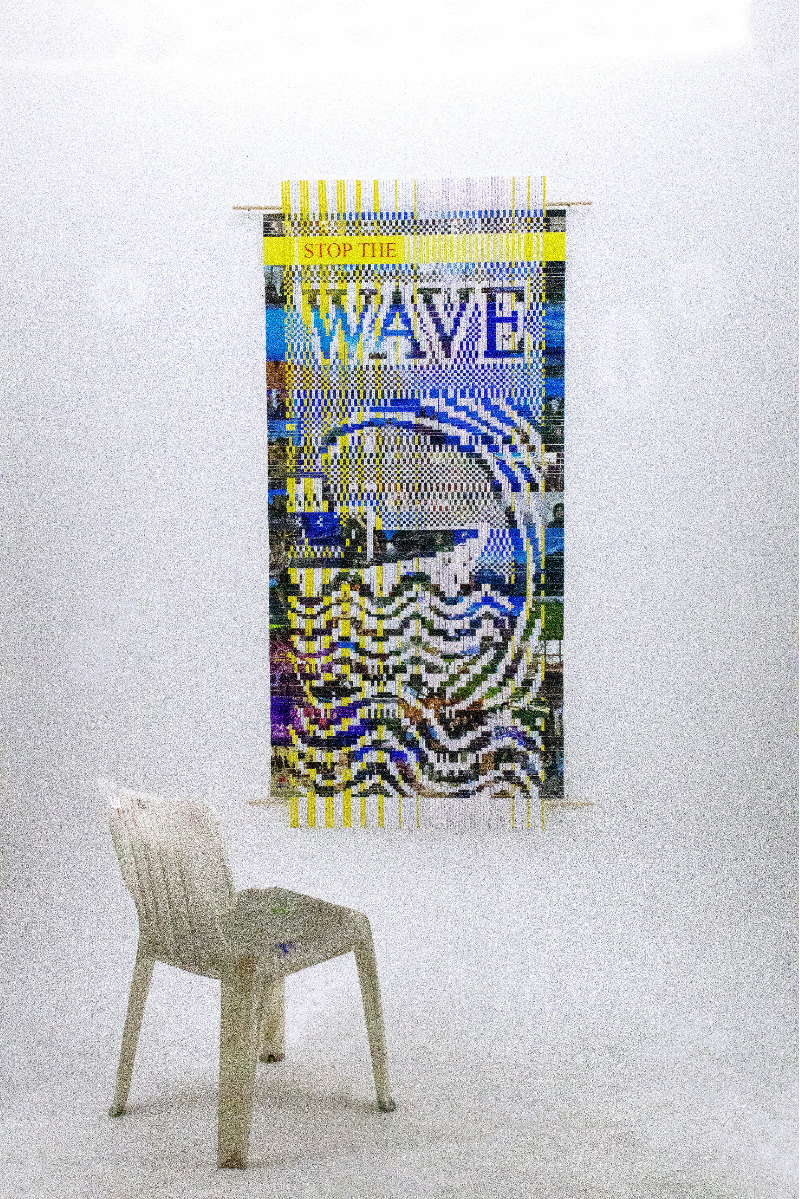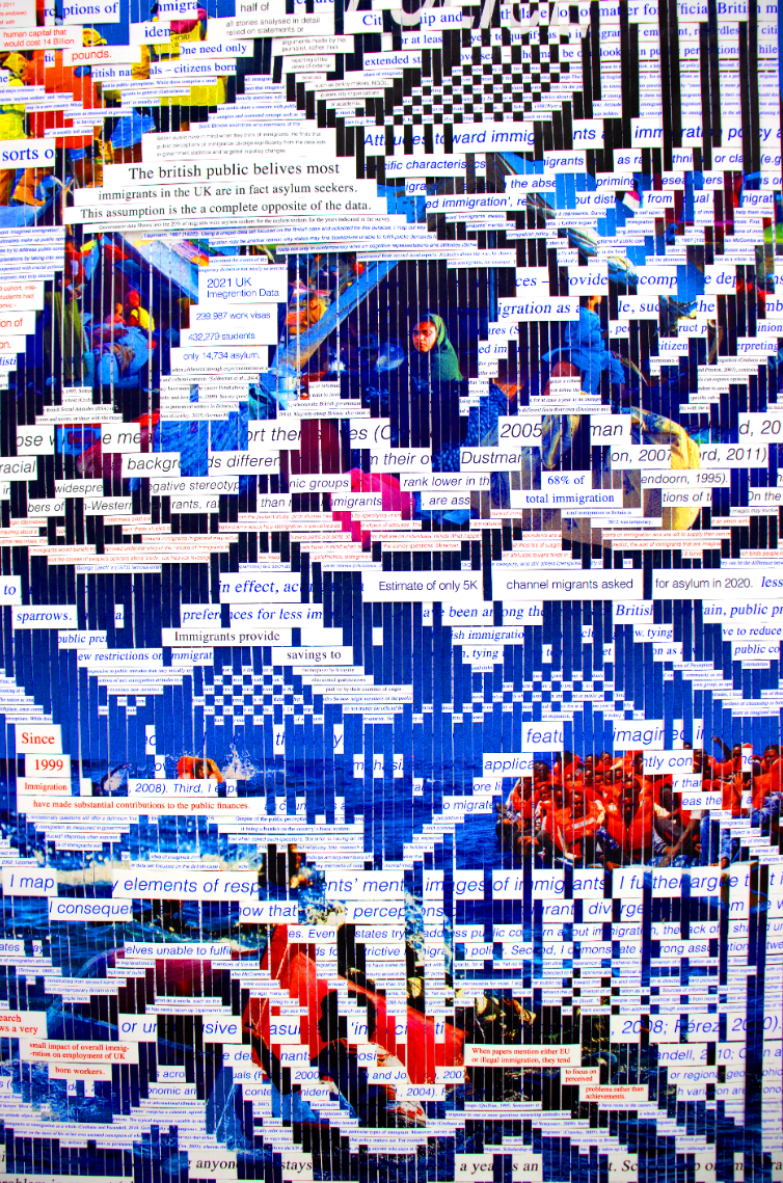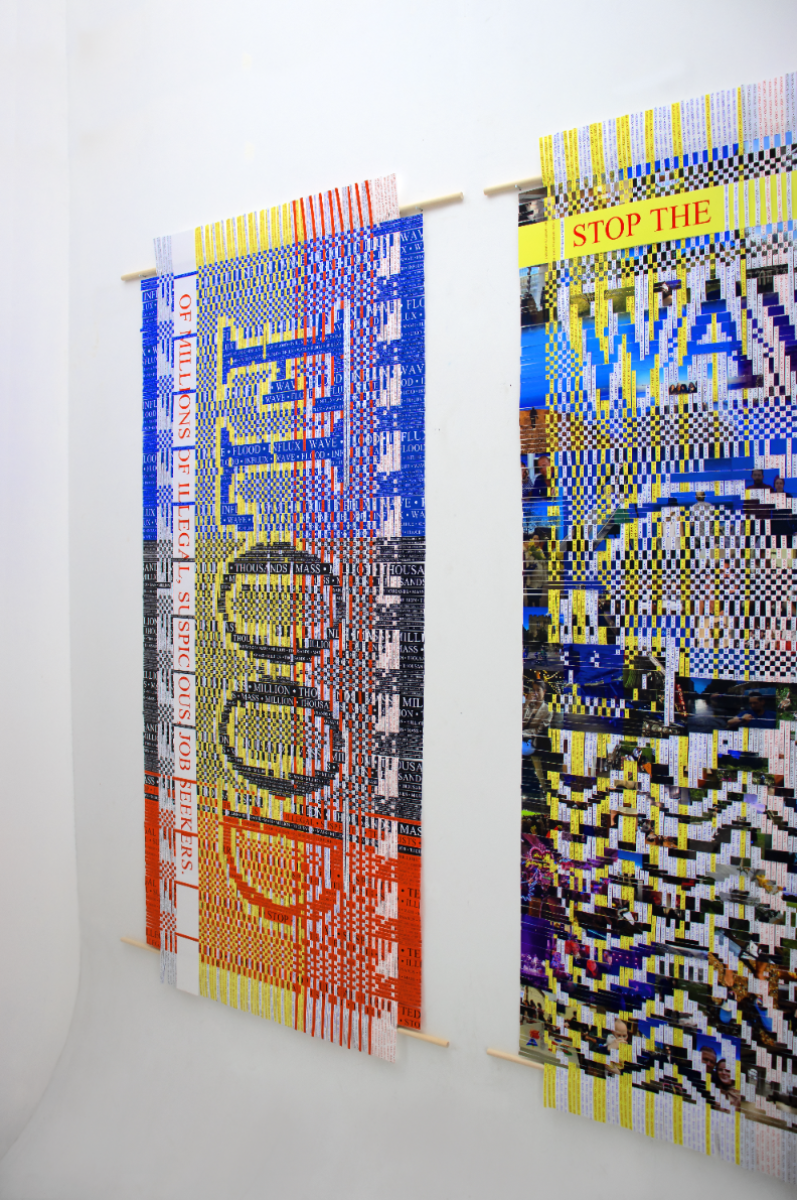Ella Krispel
graphic communication design MA
Central Saint Martins UAL
Specialisms: Digital / Visual Comm / Film / Textiles - Weave / Fine Art
Location: London, United Kingdom
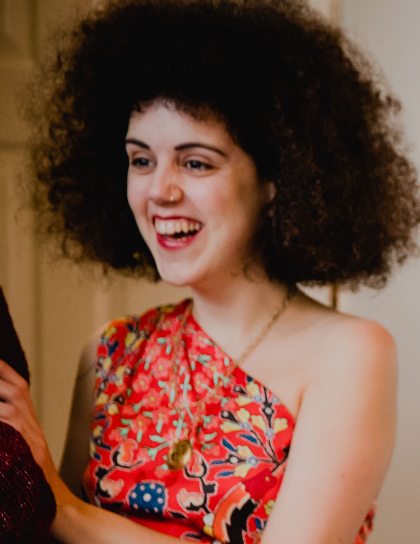

Ella Krispel

First Name: Ella
Last Name: Krispel
Specialisms: Digital / Visual Comm / Film / Textiles - Weave / Fine Art
Sectors:
My Location: London, United Kingdom
University / College: Central Saint Martins UAL
Course / Program Title: graphic communication design MA
About
In my visual research practice I am exploring the tension between the British public perception of immigration and concrete immigration data. My works, large scale woven posters, focus on the media’s impact on public discussion and the ways in which I could play a role in translating academic content into accessible, more digestible and visually intriguing pieces. These works invite a discussion that otherwise might not be formed publicly in their original media. These works were selected to be purchased by the CSM Museum & Study Collection. Some of my work on the subject is currently exhibited in the Nunnery Gallery in East London. A future collaboration and exhibition is currently being developed for The Migration Museum. It will be accompanied by a workshop in collaboration with Professor Michaela Benson at Lancaster University.
'Imagined Immigration' is a collection of woven posters exploring the tension between British public perception of immigration and concrete immigration data. These experiments focus on the media’s impact on public discussion. By reporting warped and distorted data or information about immigration and immigrants in the UK, the media feeds the public’s misunderstanding of the phenomena impacting political agendas and policies. By highlighting the media's role in designing our collective perception, the project aims to re-define information making as a type of human craft. These experimental posters were crafted from woven lines of data and information. By weaving research-based information into distorted common assumptions, it visualises how the British media’s reports on immigration are biassed and intentionally crafted as such. The handcrafted aesthetics allow the investigation into the human-made nature of information and point a finger at the British media which holds responsibility for negatively framing the subject of immigration. The weaving technique allowed me to visualise the process of information making as a metaphor, and to communicate the media’s tendency to shape information and data in a biassed and intentional way. Using weaving as a form of graphic communication design allowed me to illustrate the power of repeating words and imagery in popular media on the public perception of immigration. By weaving into patterns and shapes that represent common assumptions using repetition of a word or imagery, one could start understanding the power and recklessness of the British media.
Competitions

